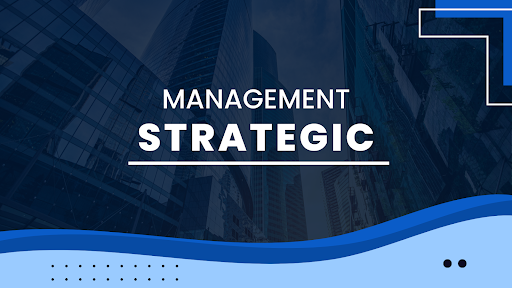One of the biggest hurdles project managers face is streamlining communication and collaboration to ensure the project runs smoothly. 42% of project managers don't follow a defined methodology, which makes their projects 15% less likely to meet goals, stay within budget, and 16% less likely to finish on time.
Clear project planning, task management, and communication are crucial when managing remote projects. Remote project management tools, such as Asana and Trello, can help teams stay organized, track progress, and meet deadlines effectively.
The right project management software empowers remote teams to collaborate seamlessly, track milestones, and ensure project success. In this guide, we'll discuss the best practices and tools for managing remote projects, ultimately driving better project outcomes. Keep reading to learn more.
The Challenges of Remote Project Management
Remote project management can present significant challenges, especially when managing remote teams. While remote work offers flexibility, it also introduces certain complexities that project managers must address.
1. Communication Barriers:
The lack of face-to-face interaction in remote project management often leads to communication gaps. Without the ability to quickly discuss issues in person, remote team members may miss critical details, resulting in misunderstandings. This can affect collaboration, especially in remote project teams where frequent updates and feedback are essential for project success.
One emerging solution is social listening, which involves monitoring internal team chats, feedback, and communication trends to identify potential disconnects or morale issues before they escalate. While traditionally used in marketing, social listening can be adapted to remote project management to surface team sentiment and communication pain points early, allowing managers to respond proactively.
2. Time Zone Differences:
Time zone differences pose a serious challenge in managing remote teams. Coordinating meetings and aligning work schedules can lead to delays, impacting project timelines. Remote teams across different locations may struggle to sync up, leading to missed milestones and project progress setbacks.
3. Tracking Progress:
Ensuring accountability and transparency in remote project management can be tough. Without daily oversight, it's easy for tasks to fall behind or team members to lose track of their responsibilities. Keeping everyone on track with their tasks requires a strong system to monitor performance and productivity. Tools like Trello, Function point and Asana are essential for effectively tracking project milestones and deadlines.
4. Tools and Technology Gaps:
The right tools are critical when managing remote projects. Team collaboration, task management, and communication can suffer without the right remote project management tools.
Choosing the right project management software like Asana or Microsoft Teams can help streamline processes, track project progress, and keep remote employees engaged. Ensuring all team members have the right technology is vital for remote project success.
By addressing these challenges, project managers can successfully manage remote teams, ensuring smooth project execution and the achievement of project milestones.
Key Strategies to Streamline Remote Project Management
1. Emphasizing Clear Communication:
Clear and concise communication is crucial in remote project management. The lack of in-person interaction can easily lead to misunderstandings when working with remote teams. Effective communication is the foundation for success in remote projects, ensuring everyone is aligned and aware of their responsibilities.
-
Tools for Real-Time Communication:
Using the right communication tools can make all the difference. Tools like Slack, Microsoft Teams, and Zoom enable remote teams to stay connected in real time. Whether a quick message or a video call, these tools facilitate smooth communication and help keep everyone on the same page.
-
Regular Check-ins and Updates:
Regular check-ins are essential to avoid confusion and ensure accountability. Schedule consistent meetings, whether daily or weekly, to update on project progress and address any challenges. These check-ins allow the project manager to monitor the progress of remote team members and ensure the project team stays aligned with the project timeline.
By emphasizing clear communication and using the right tools, project managers can implement remote team management strategies to keep remote workers engaged, track project milestones, and help the team work remotely.
2. Setting Clear Expectations and Goals:
Setting clear expectations and goals is essential for managing remote projects successfully. When working with remote teams, it’s crucial to define roles and responsibilities for each team member to avoid confusion and ensure accountability. This clarity helps track project progress and makes sure everyone knows their part in the project.
-
Use SMART Goals:
To ensure your team stays on track, use SMART goals (Specific, Measurable, Achievable, Relevant, Time-bound). These goals help break down complex tasks into manageable steps, making it easier for the remote project manager to track milestones and progress. SMART goals provide a structured way to measure success and stay aligned with project timelines.
-
Aligning Goals with Company Vision:
It’s also important to align your remote team’s goals with the company vision. When team members understand how their work contributes to the larger picture, they’re more motivated and focused on achieving project success. Regular check-ins can help keep these goals in sight, ensuring the team remains engaged and productive.
By setting clear expectations and using SMART goals, project managers can ensure remote teams stay organized, focused, and aligned with the company’s vision. Addressing business transformation challenges effectively during this alignment process is crucial, as it helps teams navigate changes and maintain momentum toward their objectives.
3. Adopting the Right Project Management Tools:
Adopting the right tools is essential to streamline project management for remote teams. These tools ensure smooth task management, better communication, and improved productivity across distributed teams.
-
Task and Time Management Tools:
Trello, Asana, and Monday.com are great for organizing tasks and managing time. They allow remote project managers to assign tasks, set deadlines, and track project progress. Additionally, task management tools such as Kanban software can help you stay on top of all the tasks you assign to your team.
These tools help ensure that each remote team member stays on track and can manage their responsibilities efficiently.
-
Collaboration Tools for Shared Files:
Google Workspace and Notion are perfect solutions for document sharing and collaboration. These tools allow remote workers to access, edit, and share files in real time, fostering a collaborative environment despite being in different locations. Clear documentation and easy access to files ensure a smooth workflow and communication.
-
Project Tracking Tools:
Tools like Jira, Hubspot and ClickUp are indispensable for gaining visibility into project progress. These tools enable remote project managers to track milestones, monitor deadlines, and ensure the project stays aligned with the goals and timeline.
Adopting the right project management software makes managing remote projects more efficient and effective, ensuring project success.
4. Fostering a Culture of Accountability:
Fostering a culture of accountability in remote teams is crucial for project success. When remote workers feel responsible for their tasks, they’re more likely to deliver quality work on time.
-
Encouraging Ownership:
Encourage ownership by setting clear deadlines and deliverables for each remote team member. When everyone knows what’s expected, staying on track and meeting project milestones is easier. Clear roles and responsibilities create a sense of accountability.
-
Performance Tracking Without Micromanagement:
Track performance without micromanaging using project management tools like Asana or Trello. These tools allow you to monitor progress, check task completion, and ensure transparency without hovering over your team. Providing autonomy helps build trust within the remote project team.
-
Conducting Effective Performance Reviews:
Remote performance reviews should be regular and constructive. Schedule one-on-one meetings to discuss achievements and areas for improvement. Use tools like Zoom for face-to-face feedback and leverage collaboration tools for performance tracking. Be specific with feedback and align the review with the team’s goals and project success.
By encouraging ownership, tracking performance effectively, and conducting productive reviews, you can build a culture of accountability that drives success for remote projects.
-
Cybersecurity Risk Mitigation
In a remote work environment, safeguarding sensitive data and communication is critical. Implement cybersecurity best practices by ensuring that all remote team members use secure Wi-Fi connections, VPNs, and multi-factor authentication. Regularly update software and enforce strong password policies. Conduct training sessions to raise awareness about phishing, malware, and data protection protocols. By proactively identifying vulnerabilities and enforcing security policies, you significantly reduce the risk of cyber threats and protect both project integrity and client trust.
5. Time Zone Management and Scheduling:
Managing time zone differences is one of the biggest challenges in remote project management. However, with the right tools and strategies, you can overcome these hurdles and keep your remote project team aligned and productive.
-
Solutions for Managing Time Zone Differences:
Schedule meetings and deadlines using shared calendars and time zone converters. Tools like Google Calendar and World Time Buddy help synchronize time across multiple locations, ensuring remote team members never miss important meetings or deadlines.
-
Finding Overlap Hours for Real-Time Collaboration:
Finding overlap hours for real-time collaboration is key to effective remote work. Identify windows where team members across different time zones can meet for discussions or quick check-ins. Tools like Microsoft Teams or Zoom can help you easily schedule these real-time sessions. This ensures that critical decisions are made without unnecessary delays, keeping project progress on track.
-
Scheduling Flexibility and Its Impact on Productivity:
Offering scheduling flexibility is important for maintaining productivity in distributed teams. Allowing team members to manage their own time within a framework of deadlines can increase job satisfaction and performance. Flexible scheduling also enables remote project managers to accommodate different working styles, promoting a more engaged and productive team.
Effective time zone management helps streamline project management, ensuring smoother communication and collaboration across global teams.
Best Practices for Maintaining Team Engagement and Morale
Maintaining team engagement and morale is crucial in remote project management, where isolation and lack of face-to-face interaction can impact team dynamics. Keeping remote teams motivated and connected helps ensure high productivity and project success.
-
Importance of Team Bonding:
In a remote setting, it's easy for team members to feel disconnected. Regular team bonding activities help bridge this gap, fostering a sense of belonging. This emotional connection is important for keeping your remote project team motivated and engaged. A strong team culture contributes to better collaboration, trust, and communication, essential for managing projects remotely.
-
Virtual Team-Building Activities:
Incorporating virtual team-building activities can make a big difference. These activities don't have to be elaborate but should allow the team to interact and bond in a non-work setting. These activities build camaraderie, from virtual game sessions to team quizzes or casual video calls to share personal stories. Tools like Zoom or Microsoft Teams are great for creating these informal spaces, helping your team feel more connected and supported.
-
Regular Informal Catch-ups:
Along with structured meetings, informal check-ins are essential to maintaining morale. Scheduling short, casual catch-ups can help team members stay in touch and feel valued. These informal chats help reduce feelings of isolation and allow for open communication about personal or work-related matters. Encouraging such check-ins builds trust and ensures that remote employees feel heard and supported.
-
Celebrating Milestones and Recognizing Achievements:
Recognizing the achievements of remote team members is key to boosting morale. Celebrate key project milestones and individual contributions with public recognition. Acknowledging hard work motivates the individual and sets a positive example for the team. Celebrate birthdays, promotions, or successful project completions—this shows your team their efforts are valued and appreciated.
By implementing these best practices for employee engagement and morale, remote project managers can ensure their distributed teams remain motivated, connected, and aligned with project goals, ultimately contributing to the project's success.
Managing Remote Team Performance and Accountability
One of the biggest challenges in remote project management is ensuring performance and accountability across distributed teams. Without the ability to directly oversee daily activities, remote project managers must implement strategies that ensure team members stay focused and on track to meet project goals.
-
Setting Clear Expectations and Deadlines:
Accountability starts with setting clear expectations for each team member. Defining roles, responsibilities, and specific deadlines helps keep everyone on the same page. When remote employees know what’s expected of them, they’re more likely to meet deadlines and produce high-quality work.
-
Utilizing Project Management Tools:
To track progress and ensure accountability, project management tools like Trello, Asana, or ClickUp, Gantt chart are essential. These platforms allow remote project managers to assign tasks, monitor progress, and check in on deadlines. Transparent task management fosters a sense of responsibility, as team members can see how their work contributes to the overall project progress.
-
Frequent Check-ins and Feedback:
Regular check-ins help remote teams stay aligned with project goals. A quick daily or weekly meeting can help the remote project manager assess how the team is progressing, address concerns, and provide feedback. Creating a space for open dialogue where team members can share challenges and seek support is important.
-
Encouraging Self-Management:
Monitoring performance is essential, it’s equally important to encourage autonomy and self-management. Giving team members the freedom to manage their tasks while holding them accountable for results builds trust and fosters a sense of ownership. This approach reduces micromanagement and empowers remote workers to take initiative, boosting motivation and productivity.
By setting clear expectations, using the right tools, maintaining regular communication, and promoting self-management and learning, you can effectively manage remote team performance while maintaining accountability, ensuring the success of your remote projects.
Creating clear systems for accountability is only one piece of the puzzle. Equally important is building an environment that supports trust, autonomy, and performance across dispersed teams. For deeper insight into proven approaches to managing remote employees effectively, examining how structured check-ins, goal clarity, and adaptive management styles contribute to sustained productivity in remote environments is helpful.
Did I Miss Anything?
Now, I'd love to hear from you!
Which aspects of remote project management and tools discussed today stood out to you the most?
Are there specific strategies or tools you've already implemented that have been particularly effective for your remote team? Or perhaps some new ideas sparked during this discussion that you plan to try in your projects?
Whether you're focusing on improving team collaboration, enhancing accountability, or streamlining your project management processes, I'd love to hear your experiences. Please share your thoughts and feedback in the comments below!




